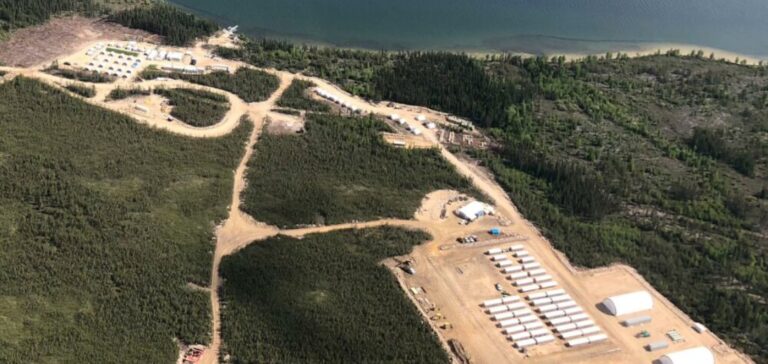NexGen Energy Ltd., a company specializing in uranium exploration, has released results from its latest drilling program at Patterson Corridor East (PCE), revealing intercepts among the richest ever recorded. Drill hole RK-25-232 highlighted a concentration of 15.9% U3O8 (uranium oxide) over 15 meters, including an outstanding peak of 68.8% over 0.5 meters. These results clearly position this deposit among the exceptionally high-grade uranium zones compared to current global standards. The announcement comes as the global nuclear industry seeks to secure its uranium supplies.
Continuity and Promising Prospects
Additionally, drill hole RK-24-222, located approximately 200 meters from the former, confirmed the geological continuity of the site with significant uranium concentrations, reporting 3.85% U3O8 over 17 meters. This discovery enhances geological understanding of the mineralized system at Patterson Corridor East, thus confirming the extent of its economic potential. To date, NexGen has conducted 64 drill holes totaling over 47,400 meters, of which 35 encountered mineralizations open in multiple directions, suggesting a potential not yet fully quantified.
A Favorable Strategic Context
These results come amid a global context marked by renewed nuclear projects, especially in the United States, where the federal government recently confirmed accelerated nuclear ambitions aiming to quadruple nuclear energy production by 2050. This dynamic underscores the strategic importance of deposits such as Patterson Corridor East, located only 3.5 km from NexGen’s flagship Rook I project, currently in the final stage of federal approval. Results obtained at PCE could notably influence future exploitation strategies in the Athabasca region.
Impact of Results on Future Exploration
Jason Craven, Vice President of Exploration at NexGen, emphasized that these results would significantly refine the site’s 3D geological models, thereby facilitating future drilling campaigns. He also noted that the mineralization observed at Patterson Corridor East shares technical similarities with the Arrow deposit, enhancing overall prospects of NexGen’s asset portfolio in this part of Athabasca. Consequently, NexGen plans to actively resume its drilling operations at the beginning of June 2025, with ongoing sample analysis campaigns throughout the year.
Confirmation of these exceptionally high uranium grades now places Patterson Corridor East at the center of attention for investors and industry players in the global nuclear sector, confronted with increasing raw material demand.






















